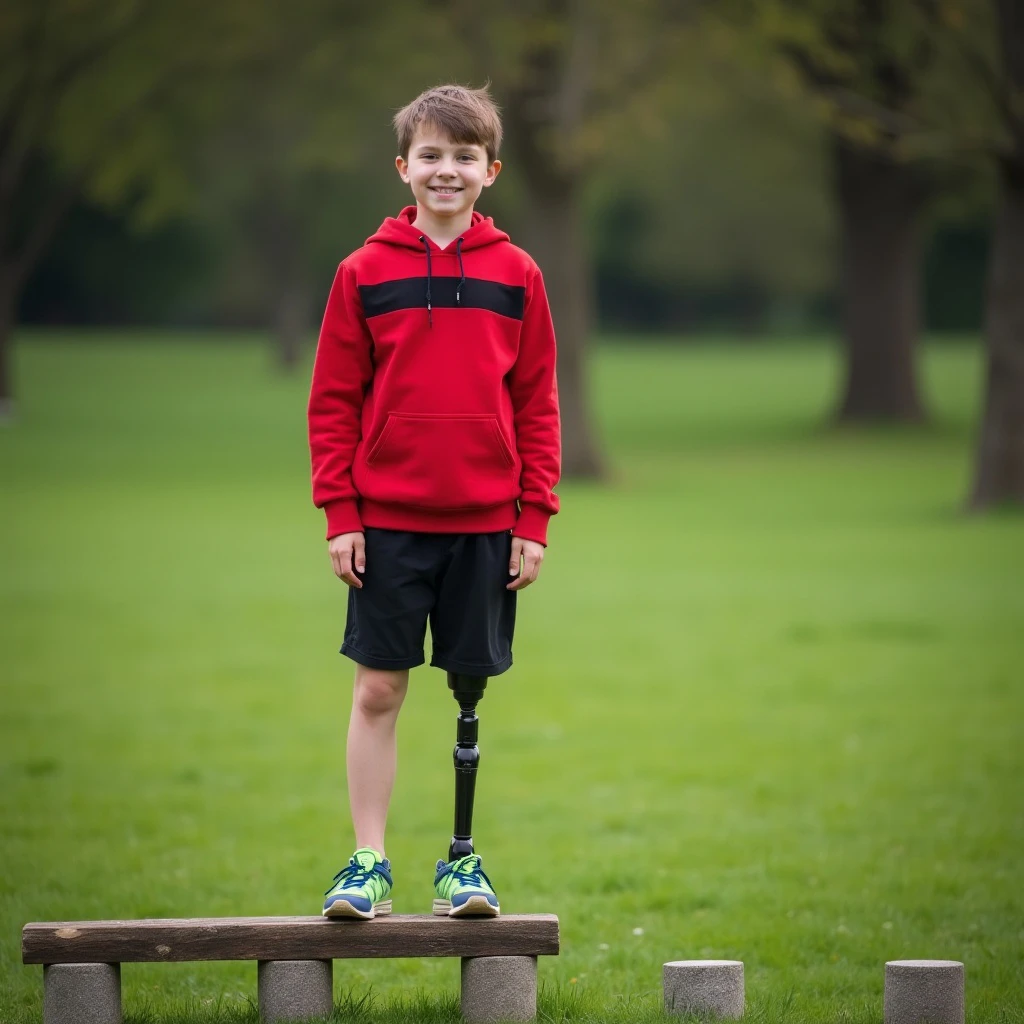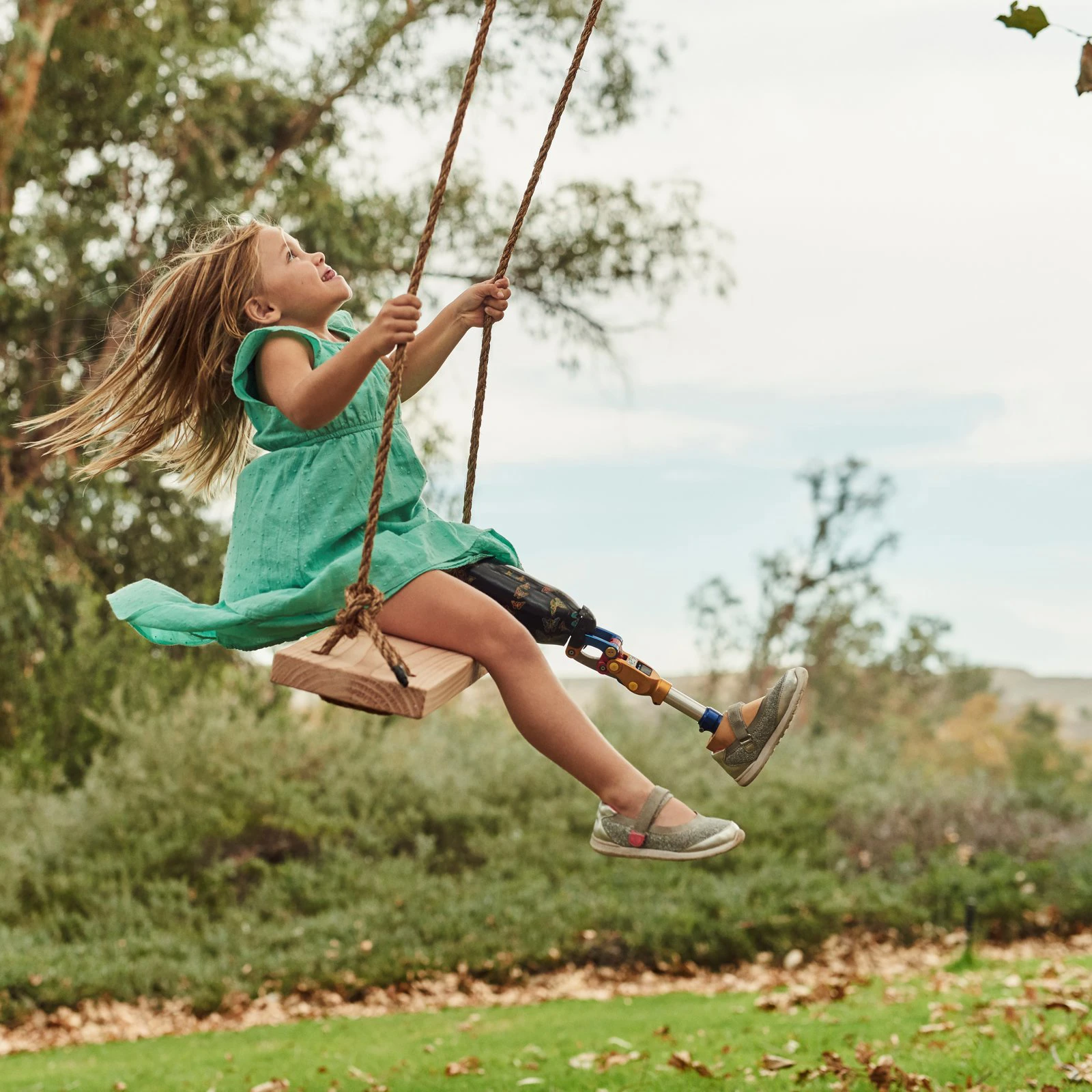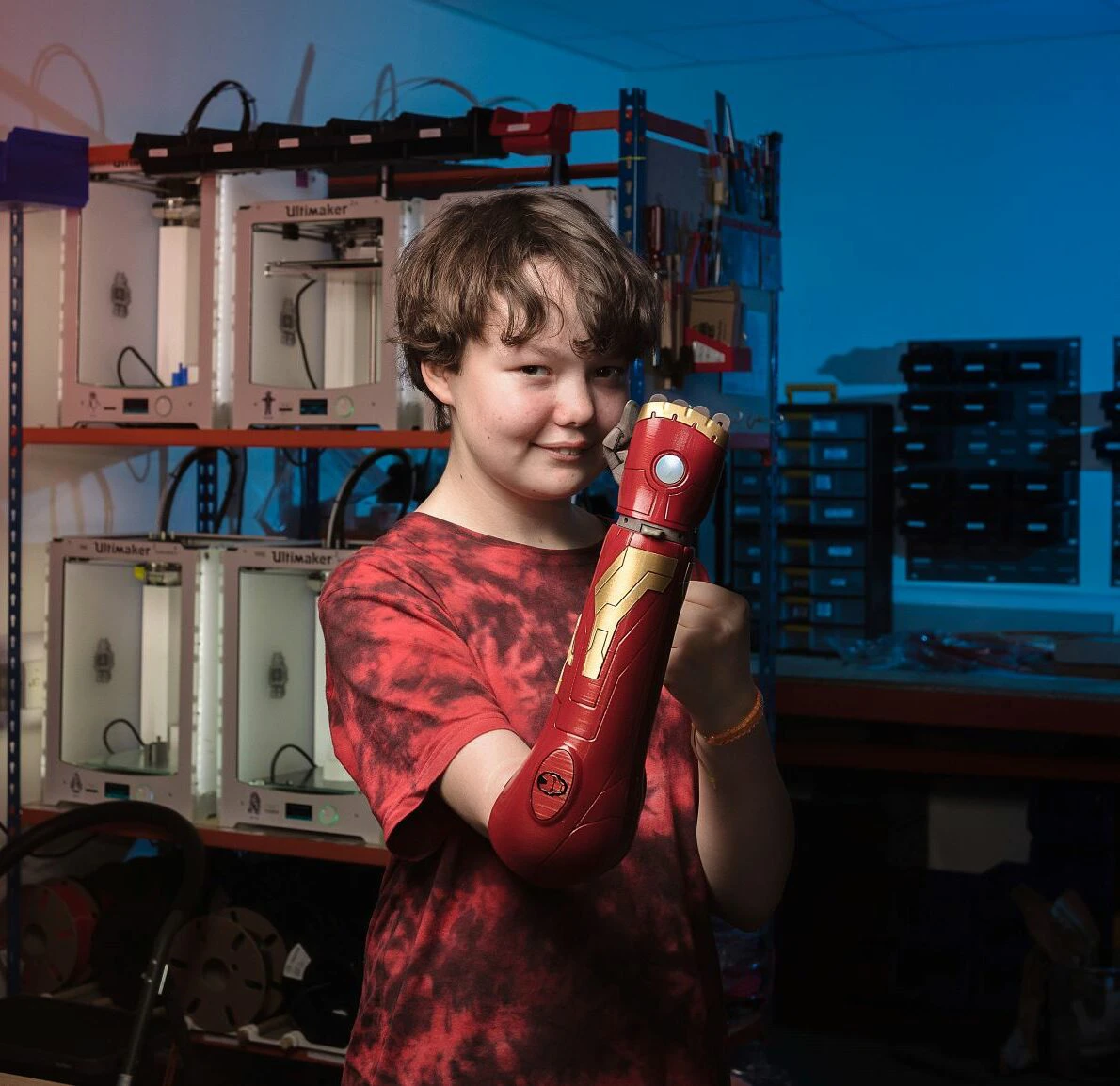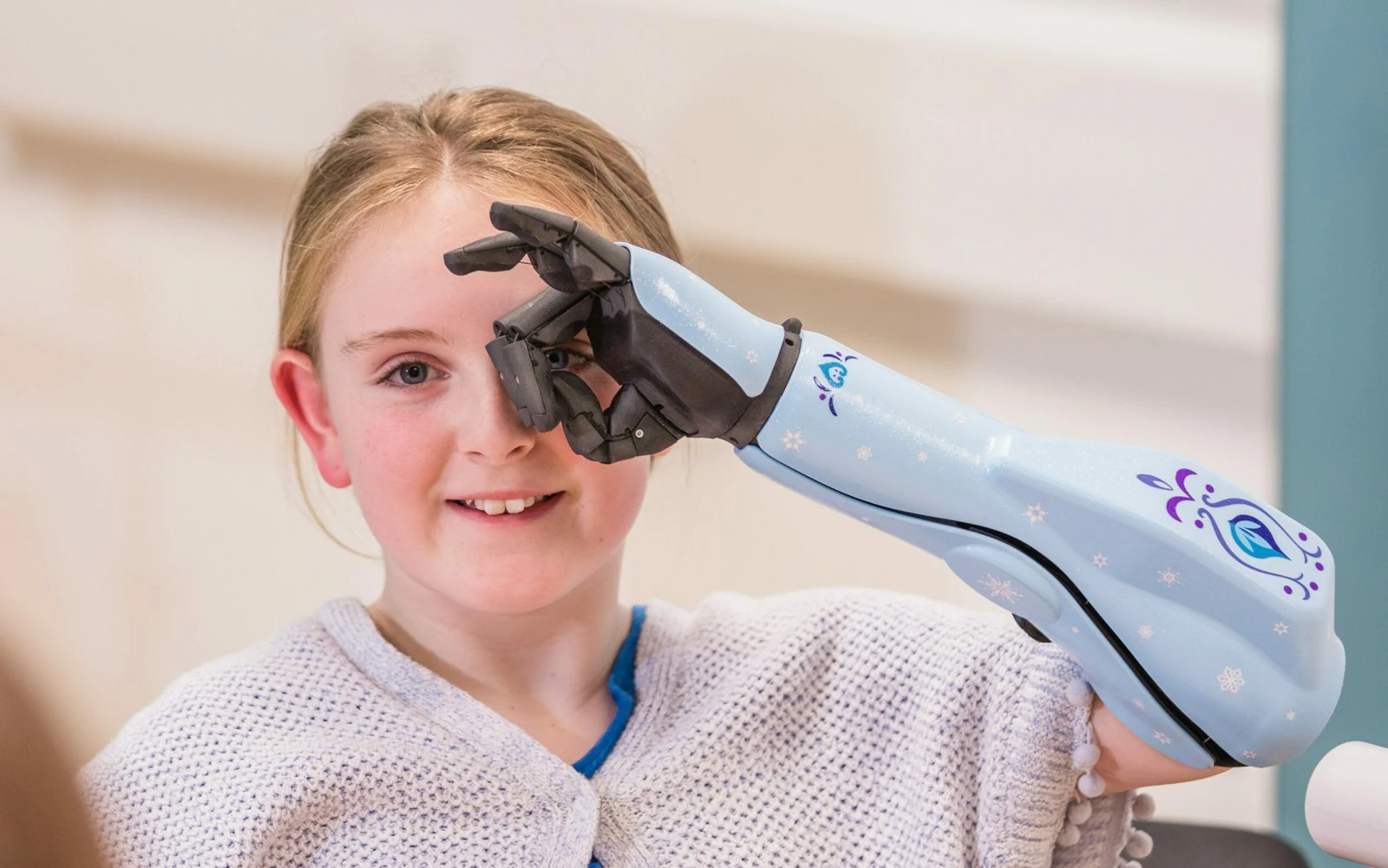The best prosthetic centre for children is a place where medical expertise, child-friendly care and personal support come together. A great prosthetic centre for children from Belgium and the Netherlands is the Amputee Care Center (ACC) in Genk, Belgium. They distinguish themselves through a specialised team in paediatric orthopaedics with more than 60 years of experience, an orthopaedic workshop, a large choice of prosthetic parts due to their brand independence, a digital (AI assisted) measuring lab for prosthesis analysis, a multidisciplinary team specialised in paediatric prostheses and a warm, personal contact with parents, children and teenagers. Moreover, at the ACC, you can enjoy the latest technologies and innovations in 3D printing, myo-electric and bionic arm prostheses, hand prostheses and finger prostheses.
The ACC paediatric prosthetics team pays great attention to comfort, aesthetics and emotional support for children. Parents especially appreciate the total approach: from personalised follow-up, customisation according to ISO13485 quality standards, reimbursement, reimbursement via mutual insurance and insurance authorisation without worries, the attention to detail by shaping the prosthesis as beautifully as possible to the child's or teenager's taste.
Which is the best centre? It's where your child or teenager can develop safely, understood and confidently, and that's what we put our heart and soul into every day. Amputee Care Center in Genk (Belgium) is the specialist in the BeNeLux for children's prostheses. The team of experts ensures that every child receives the best prosthesis and learns how to use it optimally.















